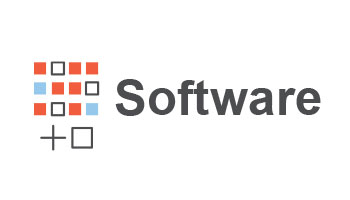How and Why to Pay for Account Reconciliation Tools & Services
For businesses of any size, keeping on top of finances is a must. Account reconciliation is the process of comparing recorded transactions internally to monthly account records, such as bank or credit card statements to ensure that the records match up with what actually happened.
Put simply, you’re on the hunt for discrepancies in accounting.
Without regular account reconciliation, it is difficult to know if the business finances are aligning with day-to-day transactions. Failing to uncover discrepancies in a timely fashion can lead to costly issues for a business.
Fortunately, business owners aren’t on their own when it comes to accomplishing this essential accounting task. Bookkeeping services, both from local sources to online software, can help manage the process of account reconciliation for you.
Why Should You Pay for Account Reconciliation?
Outsourcing account reconciliation or using an automated software is beneficial for many companies for several reasons. First, business owners aren’t always adept in accounting or bookkeeping, nor do they have time to focus their effort and attention on financial management. However, being aware of what discrepancies may be lurking behind the scenes is crucial to keep a business afloat.
Account reconciliation gives businesses the opportunity to save money by avoiding unnecessary fees relating to overdrafting a business bank account and overcharged credit cards. Additionally, account reconciliation can be a first-line defense against fraud and theft, both from internal and external sources. Last but not least account reconciliation is important for business to prevent financial statement errors.
When a discrepancy is found thanks to consistent account reconciliation, businesses can manage corrections quickly before the difference wreaks havoc on the company’s finances.
Hiring a professional service to manage account reconciliation is often considered an extra expense not many businesses want or are able to cover. On average, account reconciliation services may add between $300 and $2,000 to the budget each month, depending on the hourly rate charged by the bookkeeper hired or software used.
Despite the costs, outsourcing account reconciliation or using a reconciliation software solution by the company can ultimately pay for itself, given the cost-savings available by finding and correcting discrepancies quickly. Here are a few benefits to consider. One fully automated, integrated reconciliation product can cover data transformation and enrichment, transaction matching, reporting and analytics, exceptions management, period-end close workflow. Reconciling multiple different data sources of varying formats can be faster and more efficient. Finally, account reconciliation services offer fully compliant, granular, and detailed audit trails for future reference.
How to Pay for Automated Reconciliation Tools
The value of account reconciliation cannot be overstated, but figuring out how to pay for the extra expense of outsourcing the task may seem a bit daunting. Fortunately, businesses have several tools at their disposal to cover the cost.
Budgeting It In
For profitable businesses, the simplest way to pay for account reconciliation services is adding it into the monthly budget. To to do this, first figure out how much it is going to cost you. Shopping around for the cheapest price (while keeping in mind what you get in return) is always a good idea, but when more complex processes and large volumes are reconciled, advanced solutions are required – and they come at a higher price. Select the option that is best suited for your business size and reconciliation needs, then build the cost into monthly expenses moving forward.
Small Business Loans
If your business is not yet profitable or is tight on cash flow month to month, consider a small business loan to cover account reconciliation expenses. Small business loans are available from several lenders and in varying amounts and types, but most come with a fixed interest rate and predictable payment that makes it easier to manage over time than other financing options.
Often account reconciliation services can be paid for upfront, covering several months at a time with a single payment. A loan can work well for this payment structure. Additionally, small business loans can be used for just about any valid business expense, and the investment in account reconciliation using a loan can reap significant financial rewards.
Business Line of Credit
If account reconciliation services are going to be an ongoing monthly expense, a business line of credit may also prove beneficial. A line of credit is a flexible financing tool that allows business owners to tap into available credit, up to the maximum credit line, and repay only what they used, plus interest.
This strategy may work well for not-yet-profitable businesses that want to invest in account reconciliation, but that does not want to take out a lump-sum loan to do so. It’s important to note that a business line of credit may carry a higher interest rate than a small business loan.
Alternative Options
Businesses may also consider alternative options, such as personal financing, to help cover the cost of account reconciliation. Personal loans are available in smaller amounts than business loans, but they may be easier to qualify for based on credit history and score.
Similarly, personal credit cards do not offer higher credit limits like business lines of credit, but they can be helpful in paying for smaller expenses if another strategy is not available. However, using personal financing only makes sense when you know there is a return on investment for the expense you are covering.
Conclusion: account reconciliation tools save time & costs
Account reconciliation is a valuable tool for businesses across all industries, but business owners don’t have to add bookkeeping to their skill set if they don’t want to. Instead, account reconciliation with the help of a local or online service can take provide some savings for the business when done consistently over time.
The good news is that companies have several methods for covering the added cost of account reconciliation, through budgeting, loans or credit lines, and personal financing options, or a combination of these strategies.
Introducing our guest blogger Andrew Rombach. He is a Content Associate for LendEDU – a website that helps consumers and small business owners with their finances. When he’s not working, you can find Andrew hiking or hanging with his cat Colby.

 follow our blog
follow our blog






















 Quick response
Quick response

